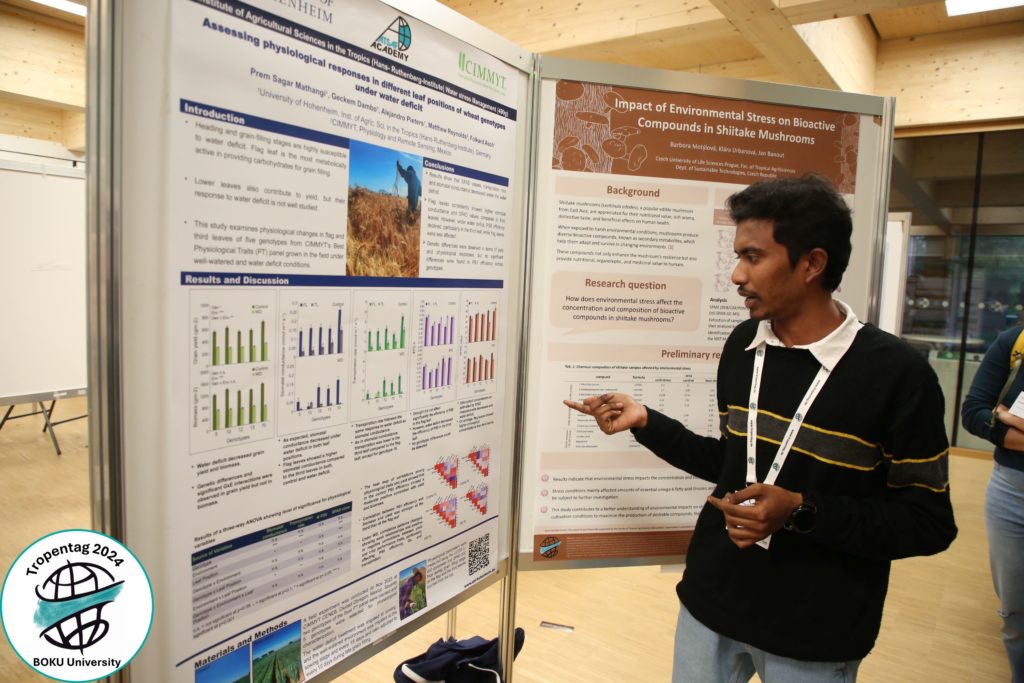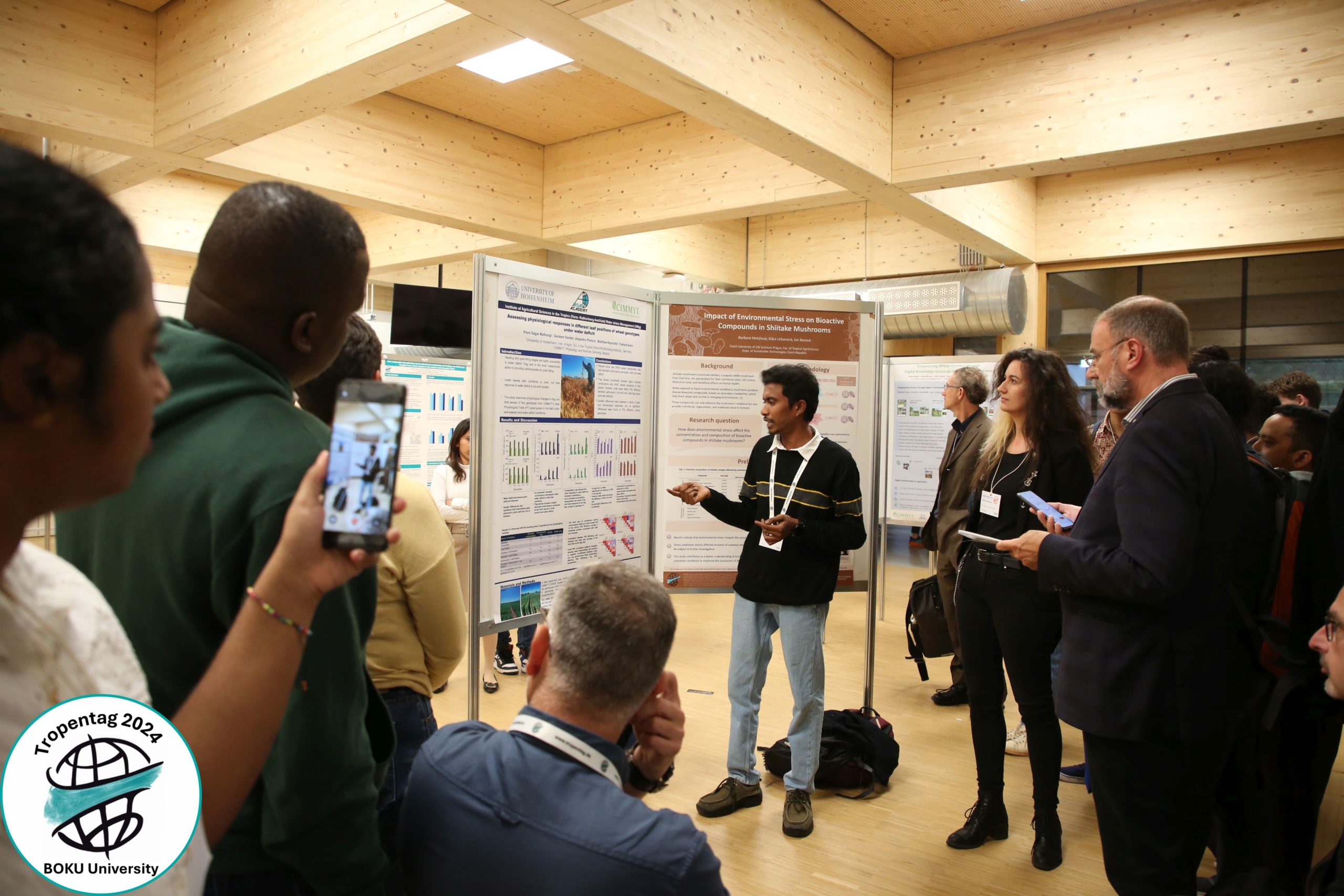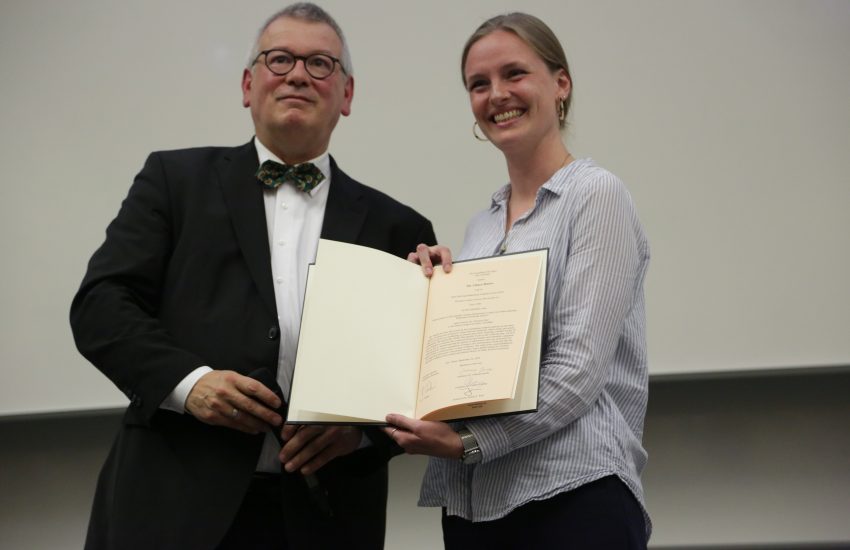Every leaf counts. The key to Drought Tolerance.
In the quest to combat climate-induced droughts, every leaf counts. A new study presented by Prem Sagar Mathangi, a master’s student at the University of Hohenheim at Tropentag 2024, sheds light on an overlooked aspect of wheat physiology: the role of lower leaves in drought resilience.
Wheat’s ability to withstand drought has been the subject of numerous studies, but most focus on the flag leaf, given its significant role in supporting grain yield. However, this study examined elite wheat genotypes from CIMMYT’s Best Physiological Traits (PT) panel under well-watered and drought conditions.
The results revealed that water deficit led to a sharp decline in key physiological parameters such as stomatal conductance, transpiration rate, and chlorophyll content. However, the flag leaf consistently performed better than the third leaf, maintaining higher stomatal conductance and chlorophyll content even under drought stress.
Quantum yield—a measure of photosynthetic efficiency. Initially, the study found no significant reduction across the plant as a whole. But when the flag and third leaves were analyzed separately, a clear difference was revealed. The third leaf’s quantum yield dropped significantly under drought, while the flag leaf remained largely unaffected.
These findings highlight the importance of leaf position in determining wheat’s physiological resilience to drought, offering a new perspective for breeding more resilient varieties. While the flag leaf demonstrated greater drought tolerance, the third leaf’s higher susceptibility to water stress may limit its contribution to grain yield under drought conditions. Therefore, future wheat breeding efforts should focus on improving not only the drought resilience of the flag leaf but also the lower leaves to ensure enhanced overall plant performance in arid environments. By considering the distinct roles of different leaf positions, breeders can develop wheat varieties that maintain higher yields even under challenging water-deficit conditions.

Author: Kishor Neupane



